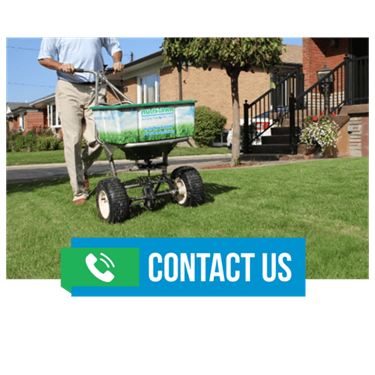5 min read
July 2024 Newsletter: Nova Scotia & Moncton
By: Steve Smith, Nutri-Lawn Halifax on Jul 2, 2024 9:25:37 AM

JULY 2024
Your Account | Free Estimate | Resource Library | Agronomic Calendar
CHINCH BUGS
 Chinch Bugs are a common pest in maritime lawns and can cause severe damage if left undetected and untreated.
Chinch Bugs are a common pest in maritime lawns and can cause severe damage if left undetected and untreated.
Chinch bugs are generally found in hot sunny areas of a lawn. They tend to accumulate in certain dry areas which initially results in localized dead patches. These dead areas are brown, irregular sunken patches, which can coalesce into much larger dead areas, when left untreated. Damage generally becomes evident in July and August when temperatures get hot and drought conditions become more prevalent.
Since this pest requires hot dry conditions for optimum survival and reproduction, irrigation during the late spring and summer is recommended. The adults can withstand water because of their protective body hairs but the nymphs can be damaged by large water droplets.
Targeted insecticide applications can be applied to reduce populations to more manageable levels.
WATERING TIPS
 Proper watering techniques are essential to an Ecology Friendly Lawn, and can reduce disease, insects, weeds and even result in water savings.
Proper watering techniques are essential to an Ecology Friendly Lawn, and can reduce disease, insects, weeds and even result in water savings.
Watering techniques should be adjusted during the growing season to compensate for precipitation and lengthy periods of drought. The amount of water and the duration of each watering should be adjusted according to soil and grass types.
Raising your cutting height will also help to retain moisture.
Apply 1 inch (2.5 cm) of water, once per week (under normal conditions) in early morning (vs. mid-day or evening).
Avoid watering in the afternoon because a large percentage of the water is lost to evaporation. Avoid evening watering because the lawn will remain wet for 12 to 15 hours, until the sun dries any remainder off the lawn. This prolonged wet period can increase chances of fungal disease.
Increase watering frequency during hot periods. To maintain a lush lawn during the hot periods of the summer, more frequent watering is required.
Generally, one application of water every 4 to 5 days is adequate. Sandy soils may require an application of water every 3 to 4 days.
PET DAMAGE
 Dog urine can cause considerable damage to all turf grass species. Damage caused by dog urine may sometimes be confused with damage caused by plant diseases that produce patch-like symptoms.
Dog urine can cause considerable damage to all turf grass species. Damage caused by dog urine may sometimes be confused with damage caused by plant diseases that produce patch-like symptoms.
SYMPTOMS
Symptoms of dog urine damage include an area of necrotic tissue surrounded by a margin of a very healthy, dark green grass. Often damage is most noticeable after snow cover is removed from an area that has been used regularly by dogs.
DAMAGE
The soluble salts contained in animal urine can kill turf grass when deposited in high concentration in one location. Often more severe damage is noticed when female dogs have urinated in an area. Due to their squatting when urinating, they are probably depositing a greater amount of urine to one concentrated area than male dogs that spread out the urine when lifting their legs. Both male and female dogs can cause this damage. The damage is most severe on dry, infertile soil.
MANAGEMENT STRATEGIES
Applying large amounts of water to the area will aid in dispersing the salts and reduce the amount of damage seen. Keeping lawn at 2.5-3” in height will help reduce or mask the damage.
CONTROLLED-RELEASE FERTILIZER
 Controlled Release Nitrogen (CRN) consists of uniform granules designed to release nitrogen into the soil over an extended time-period.
Controlled Release Nitrogen (CRN) consists of uniform granules designed to release nitrogen into the soil over an extended time-period.
The granular fertilizer consists of round, uniform sized particles for ease of handling, even distribution, and consistent application.
Controlled release nitrogen is encapsulated by a combination of one or more layers of polymer. These layers work in tandem to control the rate that water enters the granule, then controls the rate at which dissolved urea nitrogen leaves the granule.
Adaptive nutrient delivery is designed to release plant nutrients at a rate that is compatible with the requirement of the plant. It is an environmentally friendly product capable of withstanding significant rainfall events without leaching. Heat and water drive the release rate of the contained nutrients.
Controlled-release fertilizer ensures a consistent nutrient delivery up to 120-days.

 Nutri-Lawn
Nutri-Lawn
Bridgewater: 902.527.0007
Halifax: 902.468.8101
Kentville: 902.681.2654
Moncton: 506.857.9111
New Glasgow: 902.601.5046
Truro: 902.893.2099
1-888-688-7452
Related Posts
November 2024 Newsletter: Nova Scotia & Moncton
Nutri-Lawn Newfoundland Launches Annual “Re-Nourish” Food Drive
The Salvation Army Partners with Nutri-Lawn to “Restock The Shelves”
(October 28th) Nutri-Lawn...
Nematodes + Nutri-Lawn = Goodbye Grubs!
Let Nutri-Lawn apply nematodes to your lawn and you can kiss grubs goodbye! Grubs can cause...



